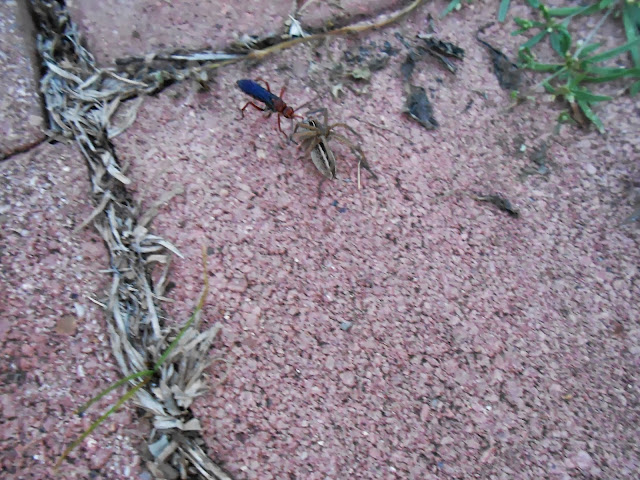Facebook can be more than just a time-wasting social experience. Last spring I learned about a Facebook group called Oklahoma Wildcrafting. They are focused on edible wild plants and things that can be made from them. It sounded interesting so I joined. I've learned a great deal about wild plants from this group. The group has over 800 members from all over the state. The members appear to range all the way from novices, like me, to college professors. You can bet that if you ask a question or post a picture of a flower or plant on their Facebook page, there will be someone who can answer the question or identify the plant.
A while back a fellow posted that he had a lot of wild persimmons on his farm and that anyone who would like to have some could contact him. I messaged him, got directions and Tom and I took a road trip to gather persimmons. Since neither of us has ever seen a persimmon tree, I wasn't sure what to look for. But, the guy gave excellent directions and we found them easily. The trees were small, but loaded with persimmons. There were several trees. Here is a picture of Tom picking fruit from the lower branches of one tree.
Here's a close-up picture showing the persimmons on the tree.
We gathered quite a few. Here is about half of them in my kitchen sink after I washed them.
These are much smaller than the persimmons you may have seen in the grocery store. Here's a picture of me holding one.
A friend gave me a recipe for persimmon cookies. It calls for a cup of persimmon pulp. Getting a cup of pulp turned out to be much more difficult than I expected because there are a lot of seeds inside each fruit. The seeds are somewhat flatten and elongated and cling to the pulp inside.
First I removed the little "cap" from each fruit and then processed them in a food mill like this. As you can see, it has a handle that is attached to a blade which is set at an angle. As you turn the handle, whatever food is in the pan is forced under the open side of the blade and pushed against the bottom and through the small holes in the bottom.
On the underside, there is a wire that turns as the handle turns and scrapes the food off as it is forced through the holes.
I had to process the persimmons in small batches and it took a lot of elbow grease to turn the handle because of all the seeds. Each small batch produced only a couple of tablespoons of pulp. It was quite frustrating and I forgot to take pictures. So, I don't have any pictures to post of the process. However, I processed enough of them to get the cup of pulp I needed for the cookies.
I think part of the problem may have been the persimmons were a little past their prime and were beginning to dry up so there was not as much juice in them, making it more difficult for them to go through the food mill. Whatever the case, I would like to have some wild persimmon trees on our land, so I took the persimmons I had left and threw them in a hard to mow place where any seedlings that come up will not get cut down by the mower.
I'm not sure how successful I'm going to be in growing my own trees, though. I think deer may have eaten the ones I threw out. I walked by there a few days later and they appeared to be all gone.





















































